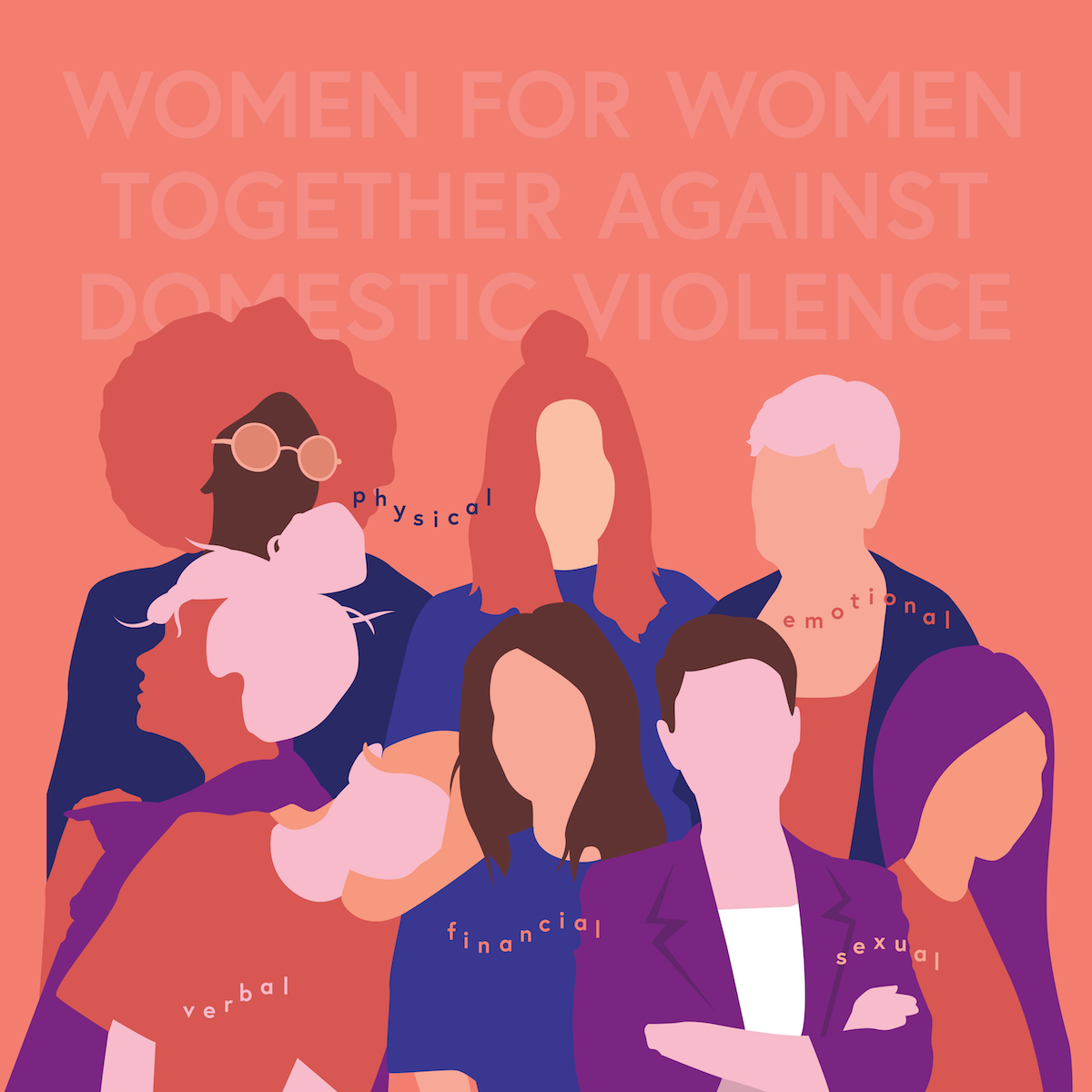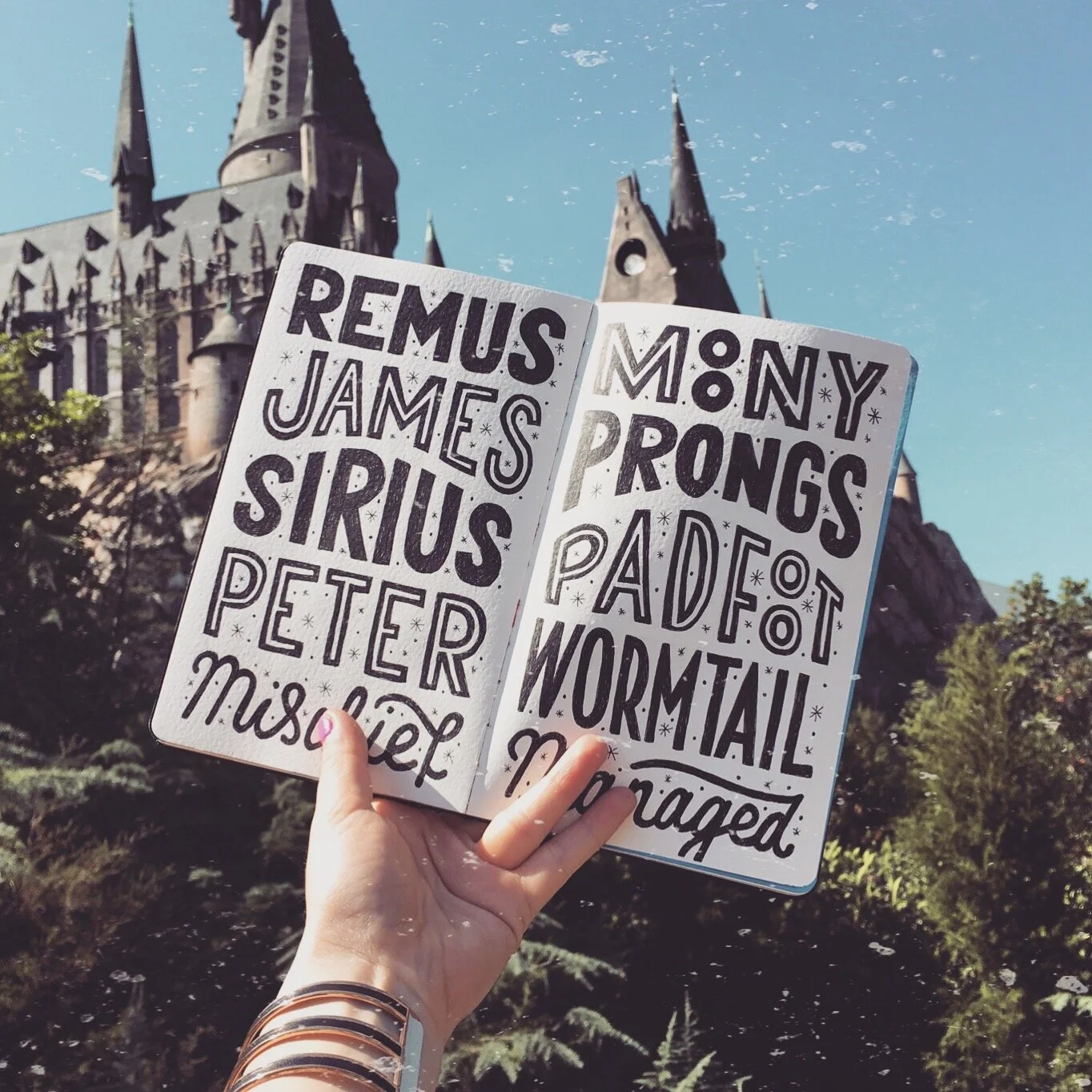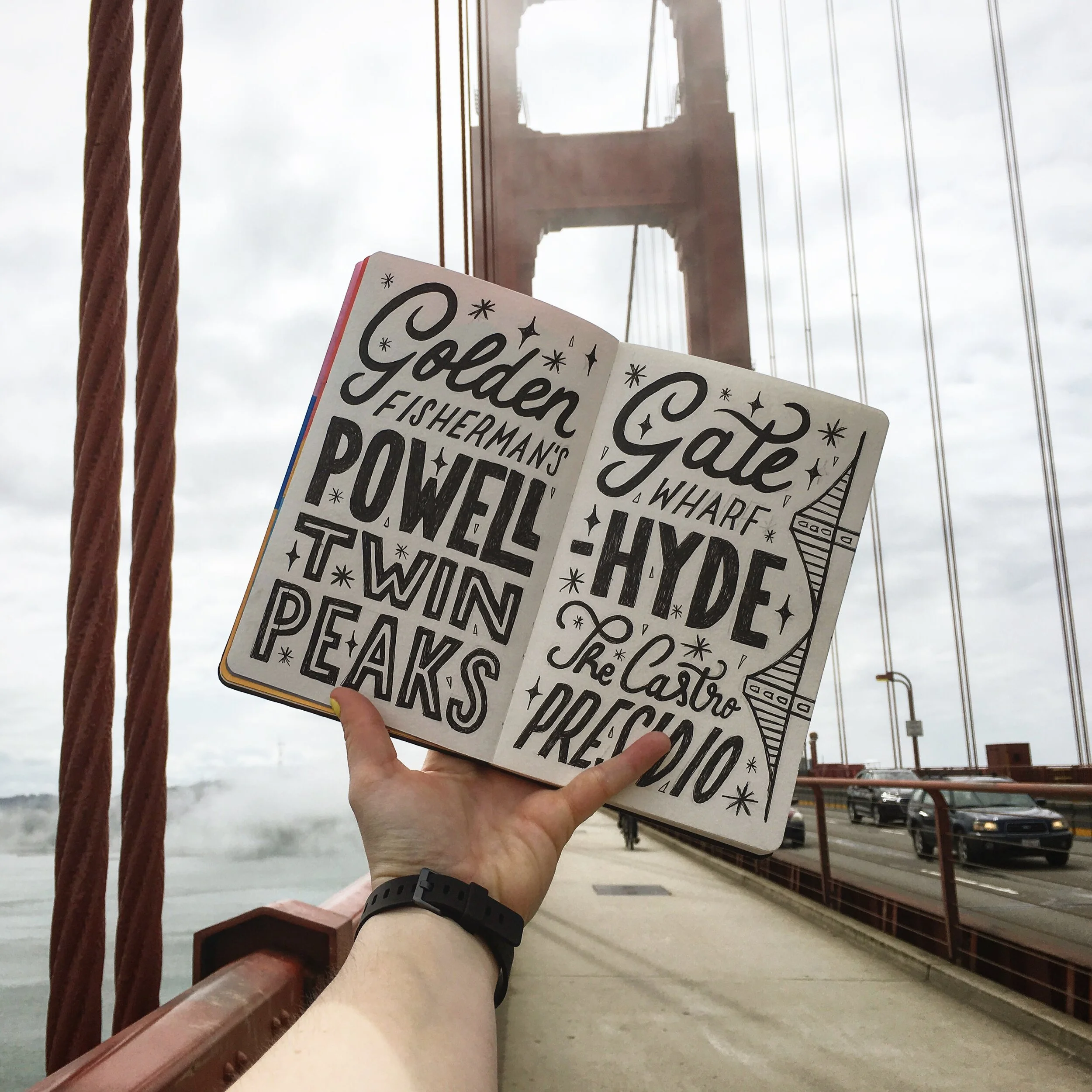‘I Love Projects That Matter’
An Interview with Eszter Czajkowski-Nyári
Hungarian graphic designer and illustrator Eszter Czajkowski-Nyári might not be a digital nomad moving to a new place every month but she has travelled a lot. She is currently based in Denver, Colorado where her creativity and imagination soar without boundaries while working on illustrations, brand identities, etc. I asked Eszter about her educational background, previous projects, and women in design among other things.
Let’s start with the beginnings. When did it occur to you that graphic design was a career path? How did your journey into the (applied) arts begin?
I used to draw all the time, but I realized only in the last year of high school that graphic design was my path. I started to take it seriously, I took extra classes, and I was drawing at home every single day.
Eszter Czajkowski-Nyári
You studied graphic design at KREA Art School. What differentiates it from other Hungarian art schools, such as Moholy-Nagy University of Art and Design (MOME) or the Hungarian University of Fine Arts?
I wasn’t sure about my career choice when I applied to schools after graduating high school; I wanted to leave some doors open. For this reason, I decided to study touristic product management at a university and design at KREA simultaneously. KREA is a private art school that focuses on providing its students with useful technical skills as well as the knowledge they need to succeed out in the wild. The schedule is tailored to the needs of working people and students who pursue multiple studies. The teachers are all working in the industry during the day and are teaching at KREA in the afternoons and evenings. They literally take their knowledge from their work desks to the classroom so that you can be the most up-to-date in graphic design. I feel that the Hungarian art universities are a bit stuck in the past and are slower to adapt to the fast-changing field of the applied arts.
You’re originally from Hungary but you currently live in the USA. I would assume you have different opportunities to seize and different challenges to overcome now than when you lived in Hungary – even if your work knows no physical borders. What can you tell me about the differences and the similarities between the two countries in terms of making it as a graphic designer, illustrator, and lettering artist?
There are definitely more opportunities, however, it’s not easy to make it work as a foreigner. You are a smaller fish in a bigger pond. Adding to that, you are a strange fish. On the other hand, when you have the chance to work on something here, your work is more appreciated, you get more respect from clients, and your work is more valued. I barely started working when I left Hungary, right after graduation, so I don’t have much work experience from home. In 2013, I moved to Leuven, Belgium where I worked at two different advertising agencies, gaining four years of experience, learning a lot mostly from my peers. I relocated to the USA two years ago, and ever since I’ve been trying to use all the knowledge I gathered, this time in my own graphic design studio. Currently, I’m working as a contractor for both American and Hungarian clients.
Your portfolio shows how versatile you are as a designer. What types of projects do you enjoy working on the most?
I love projects that matter. I like a good cause, or anything that helps to raise awareness about things that are important. Regarding design, I enjoy branding, illustration and lettering the most.
What do you do in times of creative block?
I take a break. I get up, exercise, eat, read a book. I distract myself with something until I can get a new fresh look at the thing I’ve been working on. I also often ask for the opinion of my designer friends. I love it that we are always there for each other in the times of need, even if it’s just for emotional support. But what if I have a pressing deadline? In that case, I first panic, then I start concentrating on my breathing, lay down on the floor for five minutes and try to clear my mind of all the thoughts. After that, I just power through whatever obstacle is in front of me.
If you had to choose: print or digital?
Print, all the way. I always appreciate a tangible object with dimension, colours, and scent.
The projects titled Girls’ Day and What is NANE? are dedicated to women. The former highlights that women can also succeed in science, technology, engineering, and mathematics. The latter was commissioned by a women’s rights association that organises self-help groups and seminars to educate people on domestic violence. How did these two projects come about?
I worked together with Juli Oravecz previously many years ago. She was the project manager who brought the lovely project of Girls’ Day to me. I almost forgot how much I can enjoy work when I’m really dedicated. I received the What is NANE? commission from Gyöngyvér Balog and Impact.design. An unusual aspect that made both jobs very easy is the amount of freedom I got from NaTE [Nők a Tudományban Egyesület / Association of Hungarian Women in Science in English] and Impact.design.
You’ve talked about ‘raising awareness’ and ‘projects that matter’. With my next question, I’d like to go a bit further. How important is it for you to work for clients who draw attention to social and gender issues, hence envisioning a better world for all?
I greatly appreciate every opportunity when I can get my hands on a project that actually has a meaning and that is not just another insurance company annual report. I respect all the inquiries that I get, but I’m very glad that I’m at a point where I have more say in the visual appearance and communication of important matters.
On a related note, American graphic designer Jessica Walsh launched her studio a few weeks ago and emphasised in an article that ‘70% of design students are women, but only 5-11% of creative director positions are held by women. Only .1% of creative agencies are women-owned.’ What are your experiences of being a woman working in the field of design?
Interestingly, I see more women being busy in graphic design than men. I happen to know very powerful female leads in design, but it is true indeed that most of the creative director positions are held by men. As a designer, the focus of your everyday operation is actually on designing, but, as a director, it’s more on managing the work of graphic designers, supplying great ideas, and overlooking the process. I feel like I would always be better in the role of a creator than in the role of a manager.
What moments in life have shaped you as an artist/creator?
My time in design school, all the things my teachers and peers taught me, and all the constructive criticism I received throughout the years. I have yet to learn how to value compliments.
In your picture book Alphabet of Adulting, inspired by the 36 Days of Type typography challenge, you truly cover the areas that may make a young adult anxious or excited. Why did you choose this particular theme, and how did you decide on the word for each letter?
As a person battling anxiety on a daily basis, I wanted to dedicate this season of 36 Days of Type to everyone who’s going through similar experiences. Moving abroad made my safety net thinner, and from one day to the next I had to learn what does it mean to “grow up.” Alphabet of Adulting is like a picture book that teaches the alphabet to kids, but this one is made for adults. Each letter is accompanied by a word or topic that’s about growing up and acting responsibly, such as B is for Bills, S is for Sleep deprivation, and so on. There are only 26 letters in the English alphabet, but I feel like there’s way more topics to be covered.
This project also reveals that your palette consists of some intense colours. Why do you prefer/like such vivid and rich colours?
My colour palette is ever-changing. It always reflects my mood and where I want to be. If I daydream about being hidden from the world on a tropical island, I will use brighter colours. When fall is approaching, my favorite season of the year, I become obsessed with earthly tones. As a graphic designer though, you cannot take only your own taste into consideration. That’s why it’s such a blessing when your plans on the colour palette fit the client’s needs.
Book Maps is a testament to indie bookstores, and you also designed bookplates and a children’s activity book. What book would you love to illustrate, and why?
Books are my everything, and I show it in my personal projects. My other passion is illustration, so when the two comes together, that’s a great combination. I’ve designed book covers many times, but illustrations for books only a few times. I can imagine working on any type of book… But it has to be a good book that means something to me.
You’re based in Denver, Colorado but travel quite a lot as your lettering project Travel Journal 2019 shows. I’m wondering whether you create exclusively in the place you visit or you arrive there with an idea/plan for the lettering. What does the process usually look like?
Since I’m as active on my holidays as my time allows, I always make my Travel Journal entries beforehand. The act of that gets me ready for the trip emotionally. It gets me hyped up and the end result is a book full of memories. I used to write a diary, but drawings are much safer to put out into the public, as you are the only one knowing what each of them means to you.
You work from your home studio. Have you developed a daily routine?
I still have a long way to go before I develop a working daily routine. I think I’m too impulsive to sit down at a given time of the day and not stop working until another given time. I think I’m more effective if I work when I feel like I’m in the right mood and mind space. One of my goals for this year is to get my schedule more organized.
What helps you stay in the zone?
Relaxing music, good coffee and sunshine.
What are you working on right now?
I’m working on the new climate strategy of the 18th district of Budapest. I’m responsible for the branding of the campaign, with all its collateral materials.
What plans do you want to realise in the (near) future?
I just opened an online shop on Redbubble and Society6 a couple of days ago. I always wanted to sell my personal illustrations as prints. I’m continuously uploading more and more designs for purchase.
























